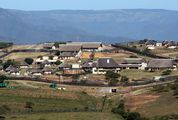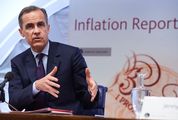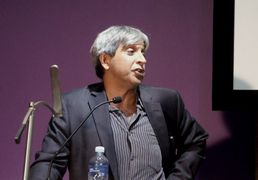The president, the public protector and respect for law
by Paul Hoffman,
2016-02-04 06:11:11.0
THE exceedingly overdue — yet most welcome — announcement by President Jacob Zuma that the long-running #PayBackTheMoney dispute concerning the so-called "security enhancements" at his home in Nkandla can be settled by way of a gracious capitulation on his part is not that hard to explain.
The first clue is in the heads of argument filed on his behalf in the application brought by the Economic Freedom Fighters (EFF), in which the Democratic Alliance (DA) and the public protector joined, in the Constitutional Court and set down for hearing next Monday. The concluding paragraphs give away the drift towards the position now taken by the president.
He raises a lot of technical points concerning the interests of justice not being served by allowing the court to be the court of first and final instance in the matter, but his argument, filed in October, ends with: "We submit that viewed in its proper context and upon a plain and common-sense interpretation of the public protector’s remedial action, the application is ill-conceived.
"The EFF is not entitled to manipulate the judicial system in a matter of enormous national interest when extraneous factors comprising investigative processes contemplated in that remedial action are yet to be finalised merely because it is politically expedient … the issues would most appropriately be ventilated in the high court and not in this court directly and finally. The public protector’s remedial action is in the process of being implemented and will continue to be implemented with the benefit of the further clarity provided by the SCA (Supreme Court of Appeal) most recently in the SABC matter."
It is necessary to go back to what the protector had in mind by the "appropriate remedial action" she is empowered to take by the wording of section 182(1)(c) of the Constitution after probing and reporting on conduct in respect of which a complaint has been accepted by her office. These are her relevant findings as set out in her report made public in March 2014: "Remedial action to be taken in terms of section 182(1)(c) of the Constitution is the following: 11.1. The President is to: 11.1.1. Take steps, with the assistance of the National Treasury and the SAPS, to determine the reasonable cost of the measures implemented by the DPW (Department of Public Works) at his private residence that do not relate to security, and which include Visitors’ Centre, the amphitheatre, the cattle kraal and chicken run, the swimming pool. 11.1.2. Pay a reasonable percentage of the cost of the measures as determined with the assistance of National Treasury, also considering the DPW apportionment document. 11.1.3. Reprimand the ministers involved …"
Instead of following the remedy prescribed by the protector, Mr Zuma allowed the issues to be tackled by Parliament and the police minister in parallel processes.
He has not taken the protector’s finding on judicial review.
In other proceedings, the SABC did not follow the remedial action prescribed by the protector in respect of its acting COO. It created a parallel inquiry by a firm of attorneys, and instead of disciplining its acting COO for lying about a matric he does not have, it promoted him to COO. This approach, which regards the protector’s finding as a recommendation rather than binding (a line of argument used in the Nkandla saga), was considered and roundly rejected by the SCA in the SABC litigation flowing from its failure to respect and enforce the public protector’s findings.
Writing for the unanimous court, Justices Navsa and Ponnan found against the SABC and clarified the law in relation to the powers of the public protector. It reads in part: "The public protector cannot realise the constitutional purpose of her office if other organs of state may second-guess her findings and ignore her recommendations. Section 182(1)(c) must … be taken to mean what it says. The public protector may take remedial action herself. She may determine the remedy and direct its implementation.
"It follows that the language, history and purpose of Section 182(1)(c) make it clear the Constitution intends for the public protector to have the power to provide an effective remedy for state misconduct, which includes the power to determine the remedy and direct its implementation. All counsel before us rightly accepted that the public protector’s report, findings and remedial measures could not be ignored.
"To sum up, the office of the public protector … is a venerable one. Our constitutional compact demands that remedial action taken by the public protector should not be ignored. State institutions are obliged to heed the principles of co-operative governance as prescribed by s 41 of the Constitution. Any affected person or institution aggrieved by a finding, decision or action taken by the public protector might in appropriate circumstances challenge that (in) a review application (without which) such person is not entitled to simply ignore the findings, decision or remedial action taken by the public protector.
"Moreover, an individual or body affected by any finding, decision or remedial action taken by the public protector is not entitled to embark on a parallel investigation process … and adopt the position that the outcome … trumps the findings, decision or remedial action taken by the protector.
"A mere power of recommendation of the kind suggested by the high court appears to be more consistent with the language of the interim Constitution and is neither fitting nor effective, denudes the office of the public protector of any meaningful content, and defeats its purpose. The effect of the high court’s judgment is that, if the organ of state or state official … ignores the public protector’s remedial measures, it would fall to a private litigant or the public protector herself to institute court proceedings to vindicate her office. Before us, all the parties were agreed that a useful metaphor for the public protector was that of a watchdog. As is evident from what is set out above, this watchdog should not be muzzled."
This exposition of the law has been rendered virtually appeal-proof by Mr Zuma throwing in the towel in the pending Constitutional Court case. His preparedness to comply with remedial action required by the protector and, in effect, go one better by involving the auditor-general in the process of arriving at a reasonable figure for nonsecurity enhancements, in a manner as objective and impartial as the auditor-general is required to be in terms of the Constitution, will surely bring the litigation to an abrupt and expeditious end.
The concession made in the light of the Justices Navsa/Ponnan judgment will have a marked effect in any appeal in the SABC matter. It will discourage all functionaries required to implement remedial action by the protector from ignoring their duties. Mr Zuma has been well-advised to offer to comply with the remedial action stipulated in the public protector’s "Secure in Comfort" report. The sadness is that it has taken almost two years to get to that point.
• Hoffman is an advocate and director of Accountability Now

Instead of following the remedy prescribed by the protector, Mr Zuma allowed the issues to be tackled by Parliament and the police minister in parallel processes, says the writer. Picture: EPA/NIC BOTHMA
THE exceedingly overdue — yet most welcome — announcement by President Jacob Zuma that the long-running #PayBackTheMoney dispute concerning the so-called "security enhancements" at his home in Nkandla can be settled by way of a gracious capitulation on his part is not that hard to explain.
The first clue is in the heads of argument filed on his behalf in the application brought by the Economic Freedom Fighters (EFF), in which the Democratic Alliance (DA) and the public protector joined, in the Constitutional Court and set down for hearing next Monday. The concluding paragraphs give away the drift towards the position now taken by the president.
He raises a lot of technical points concerning the interests of justice not being served by allowing the court to be the court of first and final instance in the matter, but his argument, filed in October, ends with: "We submit that viewed in its proper context and upon a plain and common-sense interpretation of the public protector’s remedial action, the application is ill-conceived.
"The EFF is not entitled to manipulate the judicial system in a matter of enormous national interest when extraneous factors comprising investigative processes contemplated in that remedial action are yet to be finalised merely because it is politically expedient … the issues would most appropriately be ventilated in the high court and not in this court directly and finally. The public protector’s remedial action is in the process of being implemented and will continue to be implemented with the benefit of the further clarity provided by the SCA (Supreme Court of Appeal) most recently in the SABC matter."
It is necessary to go back to what the protector had in mind by the "appropriate remedial action" she is empowered to take by the wording of section 182(1)(c) of the Constitution after probing and reporting on conduct in respect of which a complaint has been accepted by her office. These are her relevant findings as set out in her report made public in March 2014: "Remedial action to be taken in terms of section 182(1)(c) of the Constitution is the following: 11.1. The President is to: 11.1.1. Take steps, with the assistance of the National Treasury and the SAPS, to determine the reasonable cost of the measures implemented by the DPW (Department of Public Works) at his private residence that do not relate to security, and which include Visitors’ Centre, the amphitheatre, the cattle kraal and chicken run, the swimming pool. 11.1.2. Pay a reasonable percentage of the cost of the measures as determined with the assistance of National Treasury, also considering the DPW apportionment document. 11.1.3. Reprimand the ministers involved …"
Instead of following the remedy prescribed by the protector, Mr Zuma allowed the issues to be tackled by Parliament and the police minister in parallel processes.
He has not taken the protector’s finding on judicial review.
In other proceedings, the SABC did not follow the remedial action prescribed by the protector in respect of its acting COO. It created a parallel inquiry by a firm of attorneys, and instead of disciplining its acting COO for lying about a matric he does not have, it promoted him to COO. This approach, which regards the protector’s finding as a recommendation rather than binding (a line of argument used in the Nkandla saga), was considered and roundly rejected by the SCA in the SABC litigation flowing from its failure to respect and enforce the public protector’s findings.
Writing for the unanimous court, Justices Navsa and Ponnan found against the SABC and clarified the law in relation to the powers of the public protector. It reads in part: "The public protector cannot realise the constitutional purpose of her office if other organs of state may second-guess her findings and ignore her recommendations. Section 182(1)(c) must … be taken to mean what it says. The public protector may take remedial action herself. She may determine the remedy and direct its implementation.
"It follows that the language, history and purpose of Section 182(1)(c) make it clear the Constitution intends for the public protector to have the power to provide an effective remedy for state misconduct, which includes the power to determine the remedy and direct its implementation. All counsel before us rightly accepted that the public protector’s report, findings and remedial measures could not be ignored.
"To sum up, the office of the public protector … is a venerable one. Our constitutional compact demands that remedial action taken by the public protector should not be ignored. State institutions are obliged to heed the principles of co-operative governance as prescribed by s 41 of the Constitution. Any affected person or institution aggrieved by a finding, decision or action taken by the public protector might in appropriate circumstances challenge that (in) a review application (without which) such person is not entitled to simply ignore the findings, decision or remedial action taken by the public protector.
"Moreover, an individual or body affected by any finding, decision or remedial action taken by the public protector is not entitled to embark on a parallel investigation process … and adopt the position that the outcome … trumps the findings, decision or remedial action taken by the protector.
"A mere power of recommendation of the kind suggested by the high court appears to be more consistent with the language of the interim Constitution and is neither fitting nor effective, denudes the office of the public protector of any meaningful content, and defeats its purpose. The effect of the high court’s judgment is that, if the organ of state or state official … ignores the public protector’s remedial measures, it would fall to a private litigant or the public protector herself to institute court proceedings to vindicate her office. Before us, all the parties were agreed that a useful metaphor for the public protector was that of a watchdog. As is evident from what is set out above, this watchdog should not be muzzled."
This exposition of the law has been rendered virtually appeal-proof by Mr Zuma throwing in the towel in the pending Constitutional Court case. His preparedness to comply with remedial action required by the protector and, in effect, go one better by involving the auditor-general in the process of arriving at a reasonable figure for nonsecurity enhancements, in a manner as objective and impartial as the auditor-general is required to be in terms of the Constitution, will surely bring the litigation to an abrupt and expeditious end.
The concession made in the light of the Justices Navsa/Ponnan judgment will have a marked effect in any appeal in the SABC matter. It will discourage all functionaries required to implement remedial action by the protector from ignoring their duties. Mr Zuma has been well-advised to offer to comply with the remedial action stipulated in the public protector’s "Secure in Comfort" report. The sadness is that it has taken almost two years to get to that point.
• Hoffman is an advocate and director of Accountability Now



























Change: -0.27%
Change: -0.22%
Change: -0.25%
Change: -0.12%
Change: -1.17%
Data supplied by Profile Data
Change: -0.27%
Change: 0.49%
Change: -0.27%
Change: 0.00%
Change: 0.15%
Data supplied by Profile Data
Change: 0.34%
Change: -0.06%
Change: 0.09%
Change: 0.30%
Change: 0.23%
Data supplied by Profile Data
Change: 0.01%
Change: -0.55%
Change: -0.27%
Change: 0.59%
Change: -1.22%
Data supplied by Profile Data